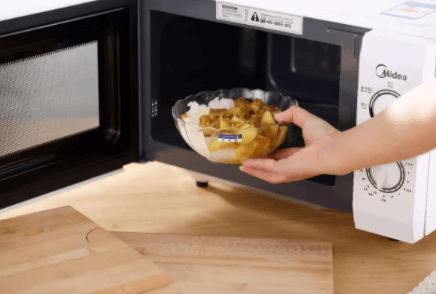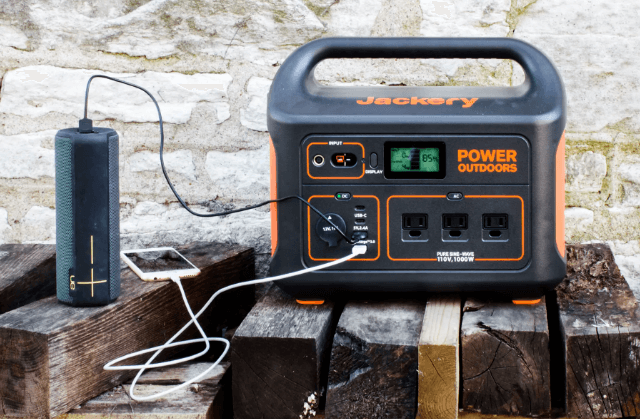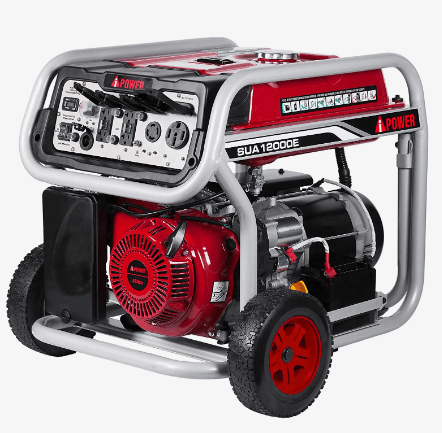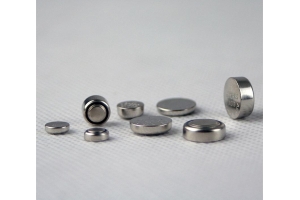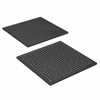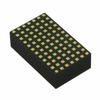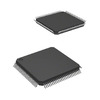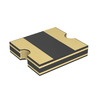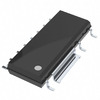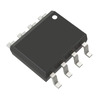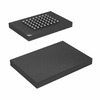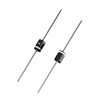on May 6th
1,019
How to Calculate the Power Usage of a Microwave Oven?
In the modern household, a microwave oven is as essential as any major appliance, yet its energy demands and efficiency are often overlooked. The primary power requirement for a microwave varies significantly depending on the model and size, ranging from a modest 500 watts for compact units to a robust 1800 watts for larger models. This diversity in power requirements necessitates a deeper understanding, especially when operating the device in non-traditional settings, such as off-grid scenarios where conventional power sources are unavailable. Understanding these nuances is important not only for choosing the right microwave but also for ensuring it operates efficiently under various conditions. What's more, exploring alternative power options such as portable power stations, generators, and battery systems can provide flexibility and continuity in using microwaves during camping or in emergencies.
Catalog
Figure 1: Microwave Oven
When choosing the right model for your needs or preparing to use your microwave off the grid, we first need to consider the power of the microwave. The wattage a microwave requires can vary significantly depending on its size and design.
Compact models generally operate within a range of 500 to 800 watts, making them suitable for small spaces and basic tasks like reheating or light cooking. On the other hand, medium to large microwave ovens might require anywhere from 800 to 1800 watts, reflecting their ability to handle more intensive cooking tasks and larger quantities of food. Typically, the standard household microwave operates at approximately 1200 to 1300 watts, providing a good balance between efficiency and capability. To accurately gauge the wattage of your microwave, it's advisable to check the manufacturer's label, which is usually affixed to the back or underside of the appliance. This label provides the official wattage rating, which could sometimes vary from the figures advertised or displayed on the front panel. Such discrepancies might arise due to different measurement standards or errors in labeling.
The utility of a microwave extends beyond the kitchen counter, particularly when you find yourself away from conventional power sources like during camping trips, fishing expeditions, or in emergency scenarios where traditional cooking methods aren't feasible. Microwaves are invaluable for quickly reheating leftovers, defrosting food, or even preparing entire meals. They are especially handy for heating quick dishes such as rice or preparing hot drinks like tea and soups efficiently. In situations without access to grid power, there are several alternatives to power your microwave, ensuring it remains operational:
• A portable power station
• A deep-cycle battery paired with a robust power inverter
• A generator
Portable power stations offer a convenient and mobile source of electricity, capable of powering small to medium-sized microwaves. For more robust needs, pairing a deep-cycle battery with a high-quality power inverter can provide the sustained, stable output necessary for the higher wattages required by larger units. Alternatively, generators can serve as a reliable power source for all types of microwaves, though they are bulkier and noisier than other options.
It’s important to consider that if your power source can't match the microwave's maximum wattage requirement, you can still use the microwave effectively by utilizing its adjustable power settings. Most microwaves feature multiple power levels, typically ranging from five to ten options, allowing for flexible adjustment according to the available power supply. Should the usage reach the upper limits of what your alternative power source can handle, simply reducing the microwave’s setting will suffice. This adjustment helps prevent overloading the power system while ensuring your microwave continues to function within a safe operational range. Monitoring the power and energy consumption continually will help you maintain efficiency and prevent any potential issues with both the microwave and the power source.
Microwave ovens utilize electromagnetic radiation, akin to radio waves, to efficiently heat food. Operating on electricity, these appliances are found in nearly every modern kitchen. The power requirements for microwaves can vary widely—from compact models needing as little as 600 watts to larger, more robust units requiring up to 1500 watts. Although it might seem like microwaves consume a considerable amount of energy, they are, in fact, relatively energy-efficient due to their typically brief usage periods. Smaller microwaves usually draw less power than their larger counterparts, contributing to lower overall energy consumption.
The energy consumption of a microwave is fundamentally linked to its power rating and operational frequency. Your energy bill reflects this usage in kilowatt-hours (kWh), the standard unit for measuring electrical energy consumption over time.
To accurately measure how much energy your microwave uses, a simple formula can be applied:
Usage time × Input power = Daily power consumption
The 'Duration of Use' represents the total time the microwave is active during the day, while the 'Power Input' is the wattage rating according to your specific model. This multiplication gives you the daily total energy consumption in watt-hours. Consider a practical scenario: if a microwave is used for 30 minutes in a day at a power setting of 1000 watts, the energy calculation would be as follows: 30 minutes, which converts to about 0.5 hours, multiplied by 1000 watts, results in 500 watts. Converting watt-hours to kilowatt-hours (by dividing by 1000) yields 0.5 kWh. Knowing the cost per kWh in your locality, you can easily calculate the cost of daily microwave use.
It's useful to estimate the energy used for typical microwave operations. For a microwave with a 1200-watt power rating:
Operating for 1 minute (60 seconds) uses 72,000 Joules (J), equivalent to about 20 watt-hours (Wh);
Operating for 2 minutes (120 seconds) uses 144,000 J or about 40 Wh;
Operating for 5 minutes (300 seconds) uses 360,000 J or about 100 Wh;
Operating for 10 minutes (600 seconds) uses 720,000 J or about 200 Wh.
Understanding these specifics not only helps in managing and forecasting monthly energy expenses but also enhances your awareness of the energy efficiency of household appliances. This knowledge allows for more informed decisions regarding appliance use, potentially leading to cost savings and a reduced environmental impact over time.
Figure 2: Take a 700-watt Microwave Oven as an Example to Calculate the Energy Consumed
Microwave ovens are a staple in modern kitchens, functioning by converting electrical energy into electromagnetic radiation to efficiently heat food. This process involves a complex interplay of factors that affect the oven's energy consumption. Delving into these aspects can offer insights into how to optimize microwave use and minimize energy costs.
Power Wattage of Microwave Ovens: The power wattage of microwave ovens varies, typically ranging from 600 watts in compact models to as high as 1500 watts in larger, more feature-rich models. The wattage is indicative of the microwave's power capability—higher-wattage units heat food more quickly and more evenly. For example, a 1000-watt microwave distributes heat more uniformly across the food compared to a 700-watt unit. However, the efficiency comes at the cost of higher electricity usage. Thus, choosing a microwave should involve considering how much quick and even cooking is valued against potential energy savings with lower-wattage models.
Size of the Microwave: The size of the microwave significantly influences its energy demand. Larger units, designed to accommodate bigger dishes or cook more food at once, naturally require more power. This increased energy requirement stems from the need to heat a larger internal space. A useful tip for reducing energy consumption in larger microwaves is to strategically place food items. By positioning denser food items towards the turntable's edge, where they can absorb more energy, the cooking process becomes more efficient, conserving energy.
Usage Patterns: The frequency and duration of microwave use are directly proportional to its energy consumption. Infrequent use of a lower-wattage microwave can lead to considerable energy savings, especially suitable for smaller households or those who use microwaves sparingly. Conversely, for larger households or those who entertain frequently, opting for a higher-capacity microwave might be more energy-efficient in the long run despite higher initial energy costs.
Type of Food: Microwaves heat food by causing water molecules within it to vibrate, generating heat. Foods with a high water content, such as vegetables, heat more quickly than those with less moisture, such as meats or thick casseroles. Consequently, foods with higher moisture content require less time and energy, enhancing the microwave's overall energy efficiency.
Standby Power: Like many modern appliances, microwaves consume a small amount of power even when not in active use, known as standby power. This power consumption ranges from 2 to 7 watts depending on the specific model. While seemingly trivial, these watts accumulate over time, contributing to overall power consumption. A simple but effective energy-saving strategy is to unplug the microwave when not in use, cutting off any passive energy use.
Age of the Appliance: As microwaves age, their efficiency tends to decline. This is primarily due to wear and tear on the magnetron—the component responsible for generating microwaves. An older microwave may take longer to heat food, thereby using more energy. Recognizing when a microwave has become significantly less efficient can be crucial in deciding when to replace an aging unit.
Maintenance: Regular maintenance, including keeping the microwave clean, plays a vital role in maintaining its energy efficiency. A clean interior not only prevents odors and stains but also improves the reflection of microwaves within the chamber, reducing the energy wasted on heating the appliance itself rather than the food.
The cost to run a microwave oven can vary, primarily based on its power usage and how long it's operated. Let's break this down into a simple, step-by-step process to understand how much it might cost you to use your microwave for everyday tasks like reheating leftovers or cooking meals.
Firstly, you need to look at the wattage of your microwave, which is usually printed on the appliance itself or in the manual. A typical home microwave uses about 1000 watts. Next, consider how long you use the microwave each time. For instance, heating a meal might take about 20 minutes. Since there are 60 minutes in an hour, running the microwave for 20 minutes equals one-third of an hour. To calculate the energy consumed during this period, you multiply the wattage by the fraction of the hour it operates. So, a 1000-watt microwave running for 20 minutes uses 1000 watts * (1/3) hour = 333 watt-hours, or approximately 0.333 kilowatt-hours (kWh). The final step is to figure out the cost of running the microwave. This depends on the rate your electricity provider charges per kilowatt-hour. Suppose your rate is $0.10 per kWh. Then, the cost for a 20-minute run would be 0.333 kWh * $0.10/kWh = about $0.033.
Therefore, in this example, using a 1000-watt microwave for 20 minutes costs you about 3.3 cents. This straightforward calculation helps you gauge the energy expense of using your microwave, which is especially useful if you're trying to manage your household energy bills more effectively. Below we've listed the monthly and annual costs of running a microwave in different states in the United States.
|
State
|
Average Electricity Rate
|
Cost Per Month
|
Cost Per Year
|
|
California
|
22.00 ¢ / kWh
|
$1.34
|
$16.06
|
|
New York
|
20.59 ¢ / kWh
|
$1.25
|
$15.03
|
|
Texas
|
12.56 ¢ / kWh
|
$0.76
|
$9.17
|
|
Massachusetts
|
22.59 ¢ / kWh
|
$1.37
|
$16.49
|
|
Florida
|
12.21 ¢ / kWh
|
$0.74
|
$8.91
|
|
Virginia
|
12.58 ¢ / kWh
|
$0.77
|
$9.18
|
|
New Jersey
|
16.20 ¢ / kWh
|
$0.99
|
$11.83
|
|
Maryland
|
14.48 ¢ / kWh
|
$0.88
|
$10.57
|
|
Washington
|
10.38 ¢ / kWh
|
$0.63
|
$7.58
|
|
US Average
|
14.19 ¢ / kWh
|
$0.86
|
$10.36
|
Chart
1: Monthly and Yearly Costs to Run a Microwave by State
To save energy while using a microwave oven and potentially reduce your electricity bills, consider these practical steps based on user experience:
Choose the Right Size Container
Select a container that is appropriately sized for the amount of food you're reheating. A container that's too large can take more energy to heat, whereas a snugger fit directs the microwave's energy more efficiently to the food.
Cover Your Food
Always cover the food you're reheating or cooking. This simple step helps to trap steam, ensuring your food heats more evenly and stays moist. Covers also prevent food splatters inside the microwave, reducing cleaning time and effort.
Stir or Rotate Your Food
Halfway through the cooking or reheating time, pause to stir or rotate the food. This helps eliminate cold spots where food hasn't heated properly, ensuring a more uniform temperature throughout the dish.
Avoid Opening the Door Frequently
Try to keep the microwave door closed throughout the cooking process. Every time the door is opened, heat escapes, requiring additional energy to bring the temperature back up, which prolongs cooking time.
Allow Hot Food to Stand
After heating, let your food stand in the microwave for a few minutes. This standing time helps to finish the cooking process using residual heat, ensuring that your food is not only thoroughly cooked but also safer to handle, preventing burns.
Powering a microwave oven off the grid necessitates a reliable and effective energy source, tailored to the unique demands of high-wattage kitchen appliances. There are several methods to achieve this, each with its specific setup and considerations.
Portable Generators: Efficient and Robust Power Solutions
Portable generators are particularly suitable for powering microwaves, especially those that operate around 1200 watts. To ensure smooth operation and prevent the risk of overloading, it is advisable to use a generator with a minimum capacity of 2000 watts. This allows the generator to operate comfortably at about 60% of its full capacity, an ideal balance for efficiency and durability. Larger fuel tanks in these generators enable prolonged operation, making them excellent for extended periods of use.
When choosing a generator, prioritize models with low Total Harmonic Distortion (THD), with values preferably under 3%. Low THD is critical because it guarantees that the power supplied is clean and stable, which is safer for powering sensitive electronic devices such as microwave ovens. Additionally, always ensure the generator is turned off when not in use to conserve fuel. Due to the emission of exhaust gases, including potentially harmful carbon monoxide, it is also essential to operate these generators outdoors to ensure safety.
Figure 3: Portable Generators
Solar Generators and Power Stations: Clean and Quiet Alternative
Solar generators and power stations offer a sustainable alternative to traditional fuel-powered generators. They are particularly effective for indoor use as they do not produce toxic fumes or significant noise. For microwaves with a typical requirement of 1200 watts, a solar generator rated at about 2000 watts, with a peak capability of 4000 watts, is recommended. This capacity not only efficiently powers the microwave but also allows for the operation of additional smaller appliances.
The appeal of solar generators lies in their eco-friendly operation, utilizing free solar energy, which, although requiring a higher initial investment, significantly reduces ongoing operational costs. The lack of moving parts in these generators minimizes maintenance needs and enhances durability. Their portable and lightweight design makes them especially suitable for outdoor use.
Figure 4: Solar Generators and Power Stations
Power Inverters and Deep Cycle Batteries: Tailored for High Demands
Utilizing power inverters coupled with deep-cycle batteries is an effective way to meet the high energy demands of powering a microwave. For a microwave that operates at 1200 watts, the system needs to be robust enough to handle about 1410 watts, taking into account an average inverter efficiency of 85%. This calculation ensures that the power drawn from the battery compensates for any inefficiency in the inverter itself. Operating with a 12V battery system, this setup would require a substantial current output of approximately 117.5 amps (1410 watts divided by 12 volts). To meet such high demand, large-capacity batteries are necessary. Lithium deep-cycle batteries are particularly suited for this application due to their ability to sustain high continuous current outputs, typically around 1C. Therefore, a battery capacity of 200Ah or greater is advisable to ensure efficient and reliable power for the microwave.
Figure 5: Deep Cycle Batteries
Each of these methods provides a viable solution for off-grid microwave operation, each with specific benefits and considerations. Choosing the right option depends on individual needs, including the frequency of use, environmental concerns, and available resources.
When considering the best battery type to power a microwave oven, particularly in scenarios like RVs or off-grid living, the choice of battery is crucial due to the high power demands and the necessity for durability and reliability. Understanding the dynamics of battery performance under such conditions can guide you to make an informed decision.
Deep Cycle Lithium Iron Phosphate (LiFePO4) Batteries
Deep-cycle lithium iron phosphate (LiFePO4) batteries are becoming the preferred choice for powering high-drain appliances such as microwave ovens. These batteries are equipped with Battery Management Systems (BMS) that protect the battery from issues like overcharging and deep discharge, enhancing their lifespan significantly. LiFePO4 batteries can handle deep discharges of up to 90%-100% and offer a lifespan of 3000-5000 cycles, which far surpasses the capabilities of traditional AGM batteries.
Figure 6: LiFePO4 Batteries
For instance, powering a 1200-watt microwave would typically require a 250-ah AGM battery. However, AGM batteries generally only support 50%-70% depth of discharge (DOD). While sufficient for short-term use, the battery's charge depletes rapidly, which is less than ideal for frequent usage. In contrast, LiFePO4 batteries can be discharged much deeper without significant loss of capacity or damage, making them a more robust and enduring option. Despite their higher upfront cost—often twice that of lead-acid batteries—the long-term benefits and savings on replacement and maintenance make LiFePO4 batteries a worthwhile investment. They are particularly recommended for settings where multiple heavy-duty appliances, tools, and devices are in regular use.
Not only are microwave ovens unique in their design and functionality, but the cable systems they use are also tailored to their high efficiency and high safety standards. Therefore, we need to understand in detail the function of each cable and its importance to the overall safety of the device.
A microwave's main power cord is usually configured as a three-conductor cable that ends in a standard three-prong plug. This cable is designed so that it can safely handle 13 to 15 amps of current, ensuring that the cable will not overheat or cause electrical failure even when the microwave is operating at high power. This three-core cable is not only able to withstand higher current loads but also avoids the risk of current leakage through its design, thus protecting users from the risk of electric shock.
The cables used inside microwave ovens are even more complex, especially the high-voltage cables that connect the
high-voltage transformer to the magnetron. The magnetron is the key component in a microwave oven that generates microwaves. This high-voltage cable must be able to safely carry voltages from 2000 to 5000 volts, so it is equipped with an extremely high level of insulation to prevent any form of voltage leakage that could lead to serious safety incidents such as fire or electrical explosion. In the internal structure of the microwave oven, there are many smaller cables responsible for connecting the turntable motor, fan, control circuit, and other internal components of the microwave oven. These cables generally use 18 to 22 AWG color-coded PVC insulated wire, which not only ensures the reliability of the electrical connection but also provides adequate security. The internal heat sensor is also connected to the microwave oven's control system through specific cables, which are designed to ensure the accuracy and timeliness of temperature monitoring.
For household wiring to the power outlet of the microwave oven, an NM-B type cable is commonly used, usually 14/2 or 12/2, and equipped with a ground wire. This configuration helps ensure a secure ground for the entire system, further reducing the risk of electrical failure. When it is necessary to repair or replace a microwave oven cable, due to the particularity of the cable and structure of the microwave oven, it is not recommended to use general-purpose cables on the market. Cables that do not meet specifications can pose significant safety risks. When carrying out such repair work, be sure to choose special cables that comply with microwave oven regulations and have them carried out by qualified professional electricians, because the high-voltage cables inside the microwave oven are potentially extremely dangerous.
Figure 7: NM-B Type Cable
Finally, when looking for cable replacements for microwave ovens, you must ensure that these cables are designed specifically for microwave ovens and avoid confusing coaxial cables used for radio frequency (RF) and microwave communications. Although these coaxial cables are also designed to handle high-frequency signals, their technical specifications and uses are quite different from those required for home microwave ovens. By precisely selecting and using the correct cable type, you can ensure the safe and efficient operation of your microwave.
While microwaves offer convenience and quick cooking options, their operation costs and energy consumption patterns can vary widely. Calculating the energy usage based on wattage and operation time provides insights into the cost-effectiveness of microwave use. Adopting energy-saving measures, such as selecting the right size container, covering food, and avoiding frequent door openings, can significantly reduce energy wastage. Beyond this, the choice of power source for off-grid usage, including the type of battery and power inverter, should be made with careful consideration to ensure efficiency and safety. By understanding these detailed aspects of microwave use—from power requirements and energy consumption to efficient operation strategies—we can optimize the functionality and economic impact of this indispensable kitchen appliance.
Frequently Asked Questions [FAQ]
1. What is the average power of a microwave oven?
The average household microwave oven has a power rating of approximately 800 to 1,200 watts.
2. How many amps does a microwave use?
If we take a 1200-watt microwave oven as an example, let's say the mains voltage is 120 volts and the amperage used is 10 amps (amps = power/voltage).
3. How many batteries does a microwave oven need?
When using battery power, assuming a 12-volt system, for a 1200-watt microwave, the required current is about 100 amps. If you use a 12-volt, 200 Ah deep-cycle battery, one is theoretically enough to provide power, but in actual use, you may need multiple batteries in parallel to support continuous use and provide sufficient depth of discharge and backup capacity.
4. How many solar panels does a microwave oven need?
Considering that a standard solar panel produces approximately 300 watts of power in good lighting conditions if the microwave's power is 1200 watts, 4 panels would theoretically be needed to match the immediate power needs of the microwave while it is operating. This does not include batteries for energy storage and possible power losses.
5. What microwave wattage is best?
The most suitable microwave power depends on your usage needs. For general home use, including thawing and heating food, a microwave oven between 800 and 1,200 watts is usually ideal. This range is enough to heat most types of food quickly and efficiently.
6. Is a higher-wattage microwave better?
High-power microwaves (such as 1,200 watts or more) heat food faster and more evenly. If you often need to heat or cook large amounts of food quickly, a higher-powered microwave may be more suitable. However, higher-power microwaves also mean higher energy consumption. If your use is more general, such as occasionally heating food, a medium-power microwave (about 700 to 900 watts) will suffice.
Share:
